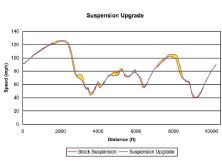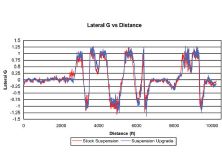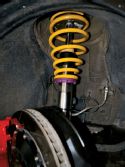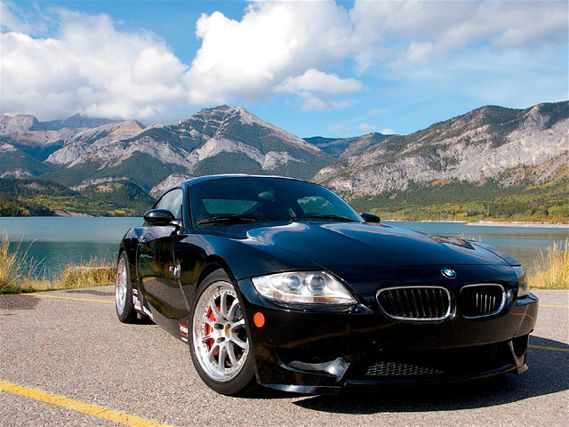 | BMW Z4M - Project
| BMW Z4M - Project
In part two, the initial handling upgrades were an OEM strut tower brace and a widened, lightweight wheel and tire set. These pieces greatly improved cornering confidence, something borne out by Traqmate's GPS telemetry. But being a track junkie, I want even more corner-gobbling prowess from Project Z4M.
For a good start on any suspension upgrade, it's important to set goals and do the homework. I also recommend talking directly with experts, tuners and race shops specializing in your particular car. As a daily driver/track day warrior, several points were necessary to achieve my handling goals: a slightly lower center of gravity; fully adjustable shocks; OEM ride quality (or close to it), and more adjustability of alignment settings to improve the tires' cornering contact patch.
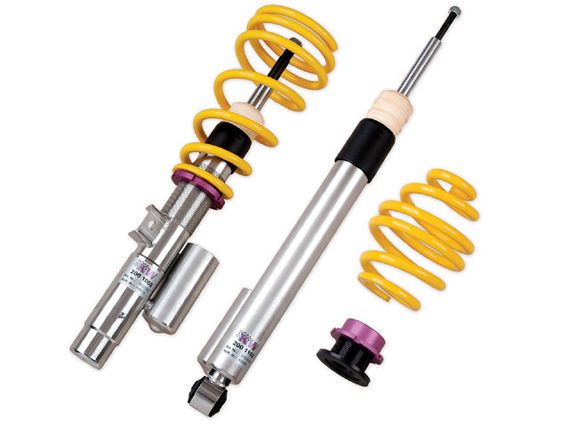 | BMW Z4M - Project
| BMW Z4M - Project
Research led to KW Suspensions' Variant 3 (V3) coilovers. In my experience, KW coilovers stand apart in aftermarket suspensions by providing true individual rebound and compression adjustability at a fair price. This setup also allows a wide range of ride height adjustability and combines high-quality German engineering with stainless steel struts, high-tensile springs, and state-of-the-art damping technology. The Z4M V3 kit comes with comfortable progressive-rate springs, which some track fiends may look down their noses at. However, I'll demonstrate that this setup completely satisfies the first three upgrade goals and still improves lap times significantly.
The M Coupe exhibits a fairly flat cornering attitude from the factory and, knowing that the coilovers would provide plenty of additional stiffness for track work, the chunky OEM anti-roll bars (27mm front and 22mm rear) were left in place. The infinitely adjustable rebound and compression of the V3 shocks make it possible to dial in a neutral handling setting.
The ec editors also pointed me toward TC Kline Racing (TCKR). TCKR has been a leading Z4 race team and tuner since 2003 and was the first to race the Z4 platform. Its success stems from a special talent to engineer suspensions.
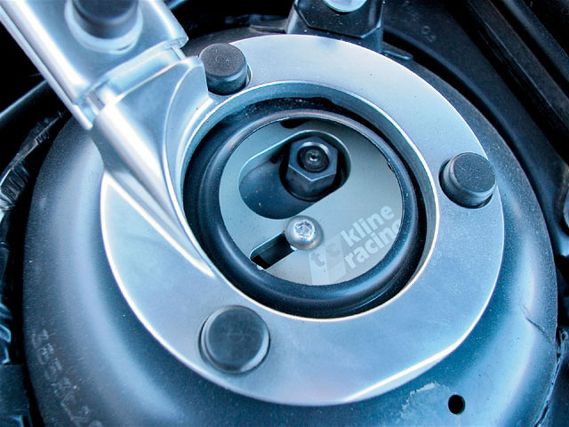 | BMW Z4M - Project
| BMW Z4M - Project
TCKR camber plates were selected to allow for more adjustability of the front alignment settings, along with heavy-duty TCKR rear upper shock mounts. Mr. Kline himself also gave some great suggestions on what ride height and alignment settings to use for street and track, and noted that the O.E. strut brace can still be used with the TCKR camber plates.
The car went to Tunerworks Performance for the complete suspension install. Coilover installation is fairly straightforward, but the upper mounts on the KW front struts had to be exchanged for the TCKR camber plates, which took a bit of extra time. The rear shocks also required disassembling some trim inside the trunk to get at the upper rear mounts.
After four hours, it was over to the alignment bay for the final adjustments. Measuring at the bottom of the rocker panel ends, the new ride height was set to allow for a 13-mm rake down from rear to front. This equated to around a 10-mm drop in the rear, and a 20-mm drop up front (measured vertically from the wheel center to the fender lip).
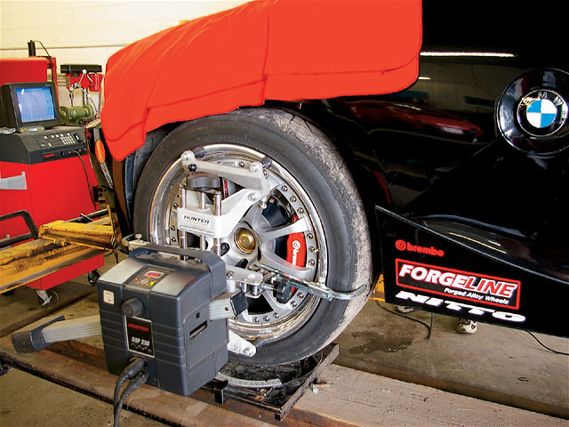 | BMW Z4M - Project
| BMW Z4M - Project
The alignment was set to street specs of -2.0 degrees camber and 1/16-inch toe-in for the front and -1.8 degrees camber with OEM-spec toe-in for the rear. With the trick TCKR camber plates, it's now possible to change the front camber at the track to between -3.2 and -3.5 degrees, resulting in 1/8-inch toe-out.
This can be achieved on-site in about 15 minutes with a level surface, a floor jack, a 13-mm ratchet, a torque wrench, and a digital level (plus/minus 0.1 degrees). These settings were used for the lap testing described below. Adjustment of the independent rebound (damping) and compression (bump) of the V3s and zeroing in on the optimum setup is challenging, but will pay dividends for specific handling and ride requirements once the ideal arrangement is found.
KW provides a recommended initial setting for rebound and compression in the kit's installation instructions, which is a good starting point. On Project Z4M, I found that reducing the rear compression slightly (approximately half a turn) from KW's recommendation decreased stiffness, which softened the ride slightly and provided more rear-end grip at the limit for neutral handling when trackside.
On the street, the new suspension has a similar ride to the factory setup, thanks to the progressive springs. And this is with the shocks set to a track level of stiffness. Also, the new raked and lowered stance gives the car a mean and purposeful look. Because it's not ridiculously low, the larger tires don't rub on every driveway ramp.
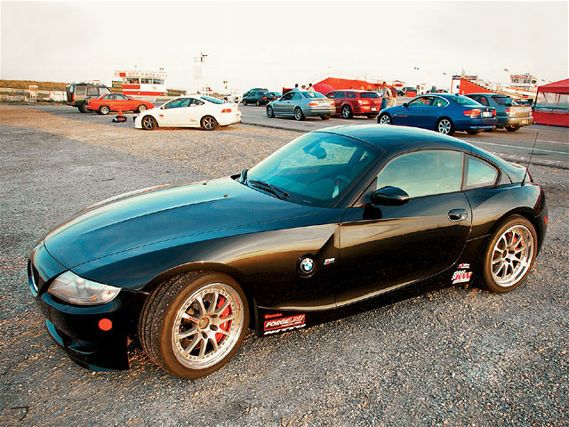 | BMW Z4M - Project
| BMW Z4M - Project
At the last track outing, the average lap time was 93.1 seconds, with a fastest lap of 92.8. Testing with the new suspension components was kept as consistent as possible, with similar weather conditions, the same driver and no in-car lap time displays for motivation. The one exception was an alteration to the driving line for turn five, made necessary by track re-surfacing. This caused the recorded times through that corner on this particular test session to be about 0.5 to 0.75 seconds slower than before.
Regardless of this minor inconvenience, the addition of the new suspension goodies still resulted in faster lap times overall, the average time being 91.6 seconds, the fastest 91.3. The Traqmate data reveals higher speeds through almost every corner. Note the significantly reduced speed through turn five. To correct the new lap times to the previous (and future) lap testing, I have subtracted a conservative 0.5 seconds from the average and fastest lap times, resulting in 91.1 and 90.8 seconds respectively.
The readout also shows higher lateral-g measurements in most corners, with the highest-g corner-turn three-showing an average increase from 1.05 to 1.15 g. More grip from the new suspension components and their improved alignment capabilities allows more speed to be carried into and through a given corner.
Now handling and braking have been improved significantly, it's time to really have some fun. In the next installment, we'll see how easy it can be to add a bit more punch to this already powerful machine.

